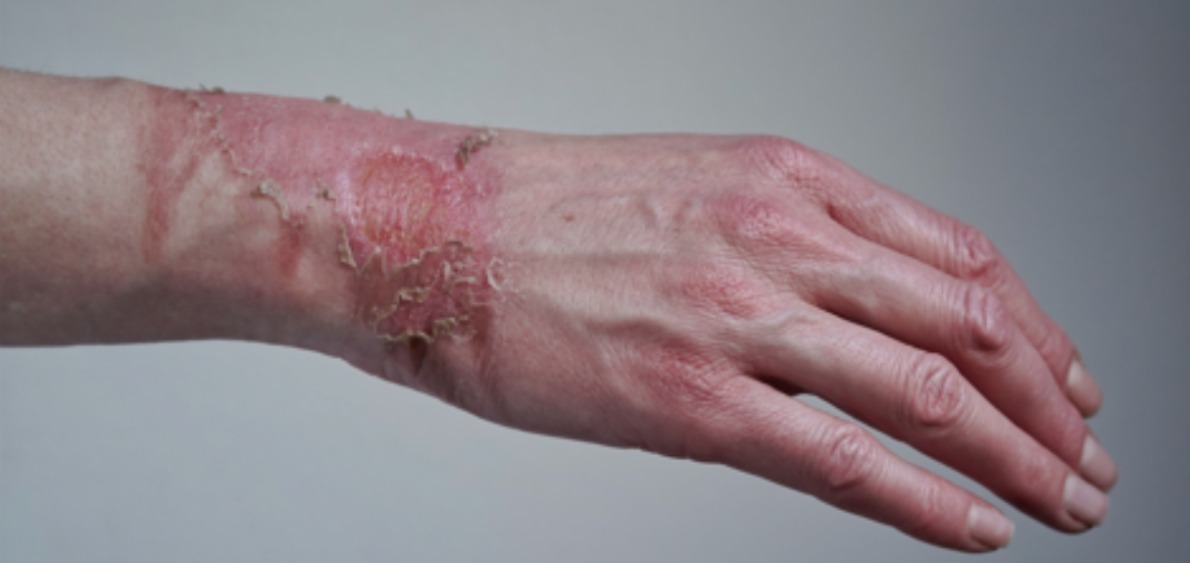Burns and Scar Treatment (Firefighter burns)

Whether it’s a scalding burn, chef burn, or firefighter burn Aurora Dermatology can now offer CO2 Laser for burns.
What is burn scar treatment?
- Experiencing a second or third degree burn is traumatic enough without the scars leaving their legacy for a lifetime.
- Burn injuries have negative physical aesthetic and social impacts on patients, and can lead to pain, heat intolerance, reduced range of motion and an extreme itch.
- Aurora Dermatology now offers C02 laser for adults and children who suffer from burn scar including household burns, scalding burns, workplace burns (e.g. chef burns), and firefighter burns.
- In decades past traditional reconstructive surgery was the main approach for hypertrophic burn scars, however these surgical procedures can be long and painful and associated with lengthy hospital admissions for more severe burns.
- C02 laser can also treat surgical scars from surgical trauma or surgical incisions.
What is C02 Laser treatment for scars and burns?
This is a non-invasive treatment to break down scar tissue to generate softer and smoother skin along with increased range of motion in the scar area.
The benefits of this treatment include
- Reduced pain
- Improved skin function
- Improved cosmetic appearaince (both scars and burns)
- Can be used on new, old, severe scars and hypertrophic scars (thick, raised scars) that previously have been difficult to treat.
What happens before your C02 treatment for scars and burns?
In the initial consult before your treatment, Dr Parisa will take an extensive patient history which includes
- Asking you about your previous skin conditions and other health issues
- Examining your burn under a special microscope
- Checking range of motion in the burn area
- Asking you about quality of life with your burn, using burns assessment scales
- Asking you about itchiness
- Taking bloods and skin biopsy if necessary
- In the four weeks before your treatment it is important to wear sunscreen every day and to avoid heavy sun exposure and tanning.
- If you have a history of herpes or cold sores, tell Dr Parisa, who may want to start antiviral medication 2 days before treatment, and continue three days after treatment (laser can sometimes trigger cold sores in those who are prone).
What happens during CO2 treatment for burns and scars?
- On the day of your treatment make sure you eat and drink before your procedure to prevent dehydration.
- Purchase a cooling water spray to cool your face after the procedure, such as La Roche Posay Thermal Spring Water, or Avene.
- When you come to our rooms, you will receive a local anaesthetic about half an hour before your treatment.
- During the treatment you will wear goggles and Dr Parisa will apply the laser to the burns/scarred areas.
- You may need to avoid certain medications that cause sun sensitivity before laser treatment such as antibiotics (doxycycline)
What is the recovery time for CO2 laser treatment for burns and scars?
- It can take up to two weeks for your skin to heal and there may be some redness for a few days.
- Our state of the art laser however uses “dot therapy” which means the downtime with the very red raw look is generally only 3 to four days.
What do I need to do to help my skin recover after CO2 laser treatment for burns and scars?
- Immediately after the procedure, use a cooling water spray and apply icepacks as needed for the first day.
- A clean face mask can also be used outside to disguise redness when leaving the rooms, always use a fresh one and take off the mask by string so you are not contaminating the mask.
- Always apply sunscreen and moisturiser before you leave our rooms to go home.
Take antivirals if you are prone to cold sores
At home:
- Use a moisturiser regularly on your skin, such as QV or Cetaphil as well as the cooling spray.
- If you are experiencing pain, use paracetamol as per instructions, and do not use aspirin or neurfoen which can increase swelling.
- Expect swelling. It is common to have some significant swelling of the cheeks and eyes, and this may take 6-8 hours to develop.
- If swelling is severe you may need prednisone, so please call our rooms.
- If there is itching antihistamines can be taken every 12 to 24 hours.
- Also wear a hat, glasses and shirt and long-sleeves if you are covering other areas of the body that have been impacted by burns.
- When skin starts to peel off day 3 to 4 do not pick the scab or crust. A tub of vaseline is useful at night, apply and this should soften scabs and help them to fall off.
- Do not use any cream containing lactic acid or glycolic acid.
- Use make up only after 10 days
- It is vital to wear a 50 SPF sunscreen when you leave the house and minimse time in sun to just a few minutes a day for the first four weeks. Also use sunscreen, hat, sunglasses and protective clothing.
Contraindications
Laser is not suitable for
- People with active infection
- Pregnant or lactating women
- People with tendency to keloid scar
- People with seizures that are provoked by light

